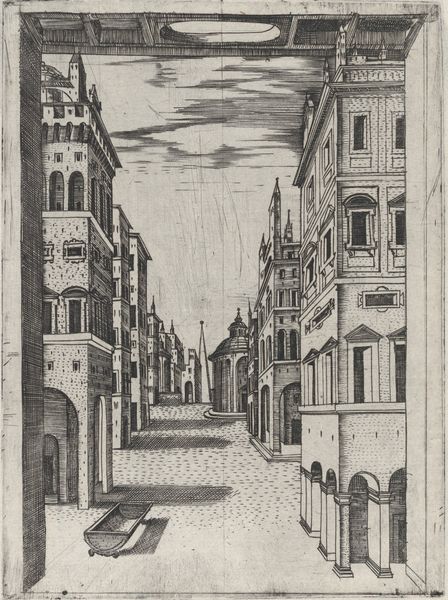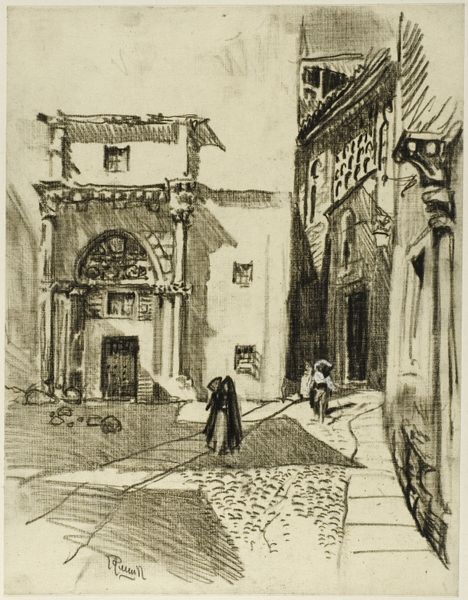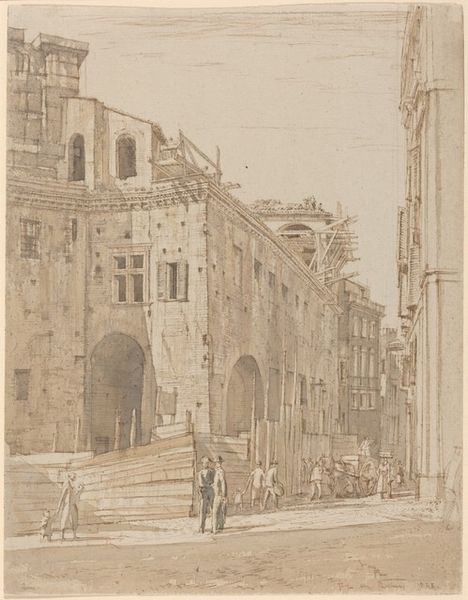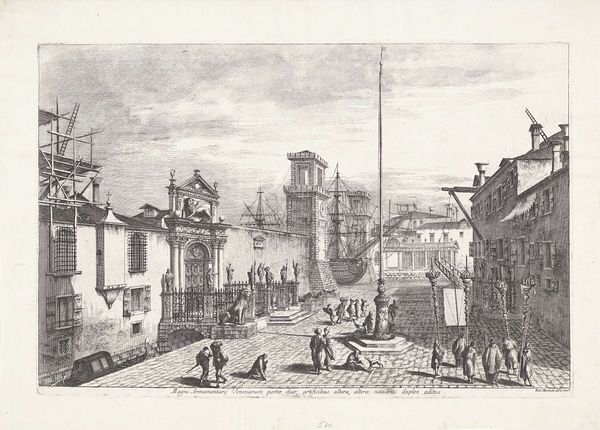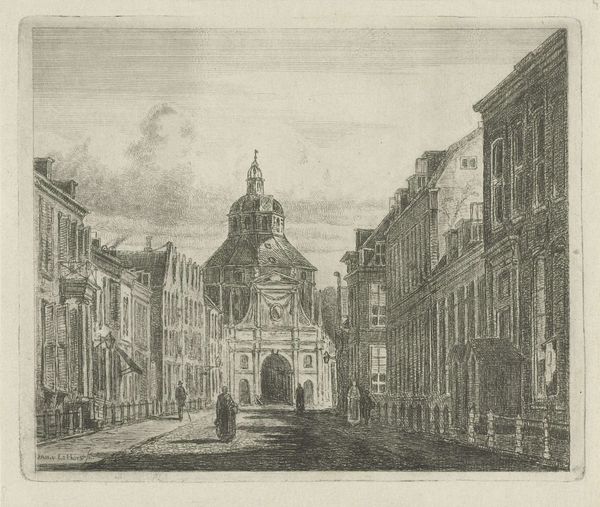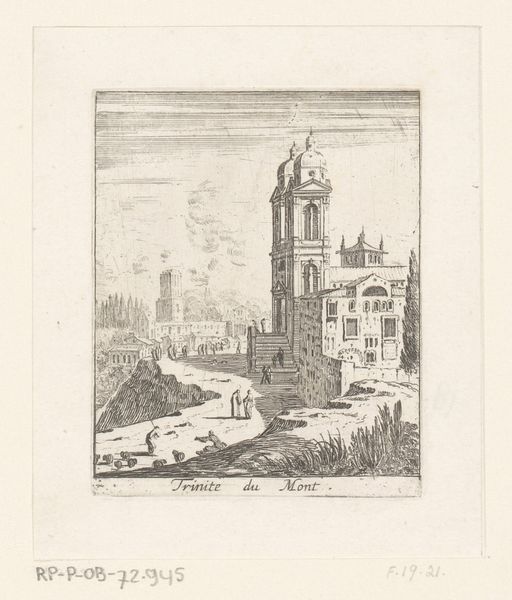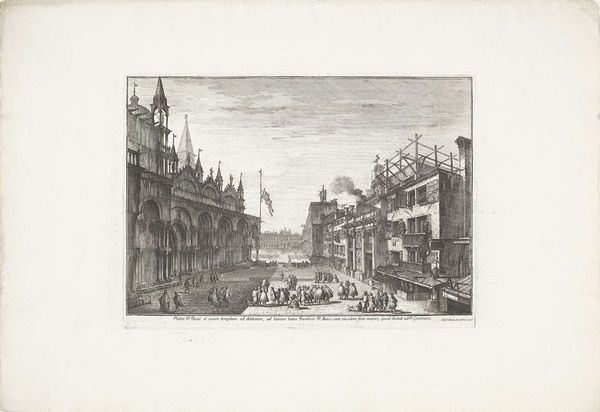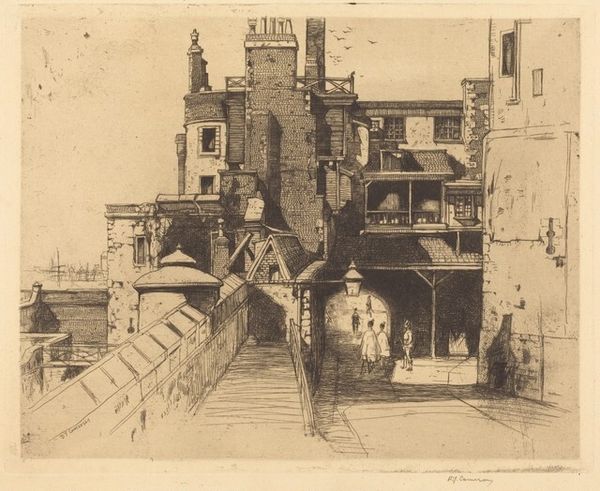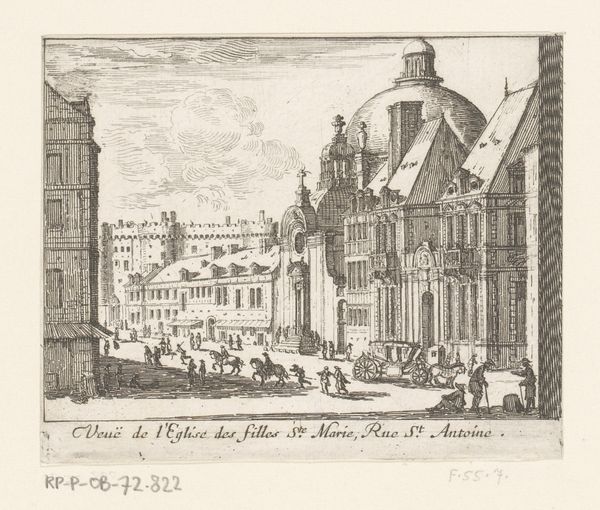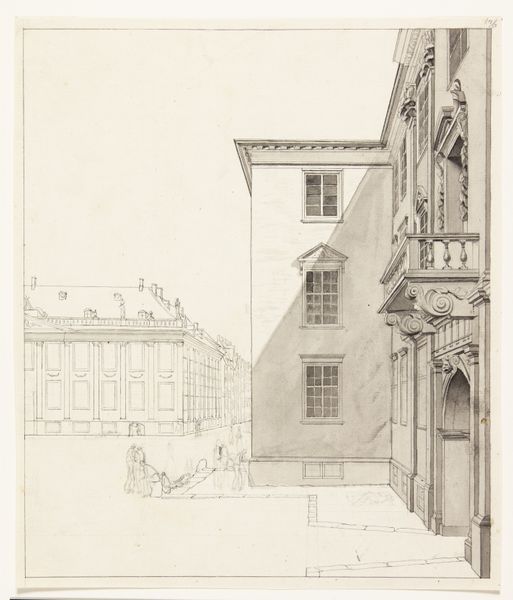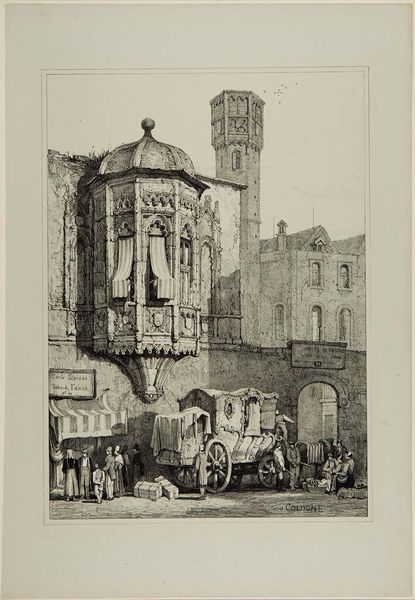
Dimensions: image: 140 x 84 mm
Copyright: CC-BY-NC-ND 4.0 DEED, Photo: Tate
Curator: The architectural lines in this etching create a powerful depth. Note how the artist, Julia Emily Gordon, uses line and shadow to guide the eye to the cathedral tower in the distance. Editor: Yes, there’s something almost Piranesian about the scale and the decaying structure in the foreground. It evokes a feeling of time and the weight of history. Is it intended to communicate political power? Curator: Perhaps. Gordon was working during a period of significant social change. Her choice of subject matter and her technique could be interpreted as a commentary on the shifting dynamics of European cities and the role of the church. Editor: The foreground archway feels confining, doesn't it? As if the viewer is caught between worlds. What purpose might the gate serve in our understanding of the composition? Curator: Precisely. The gate acts as a threshold, dividing the known and the unknown, the personal and the public. It's a brilliant compositional choice that invites contemplation. Editor: It makes you wonder about the lives of those figures milling in the distance, and their relationship to the institutions looming above. Curator: A very astute observation that highlights the complex interplay between individuals and the structures that shape their existence. I am intrigued by the contrasting textures, the smooth stone versus the rougher archway. Editor: Well, it's always fascinating to peel back the layers of meaning embedded within these works. Curator: Indeed, it enriches our understanding of the world around us.
